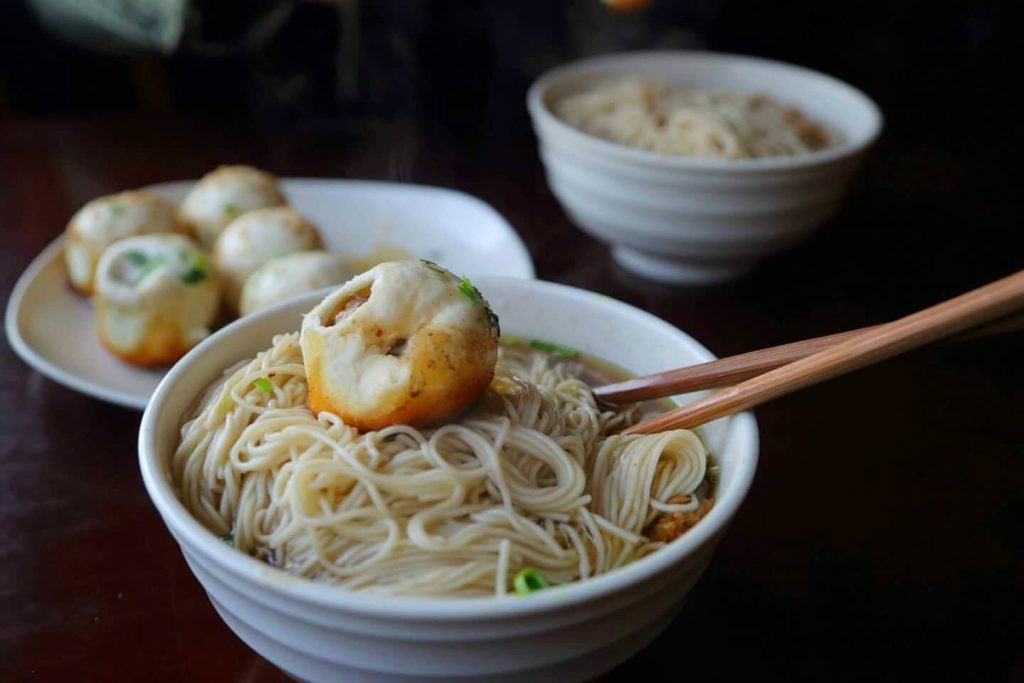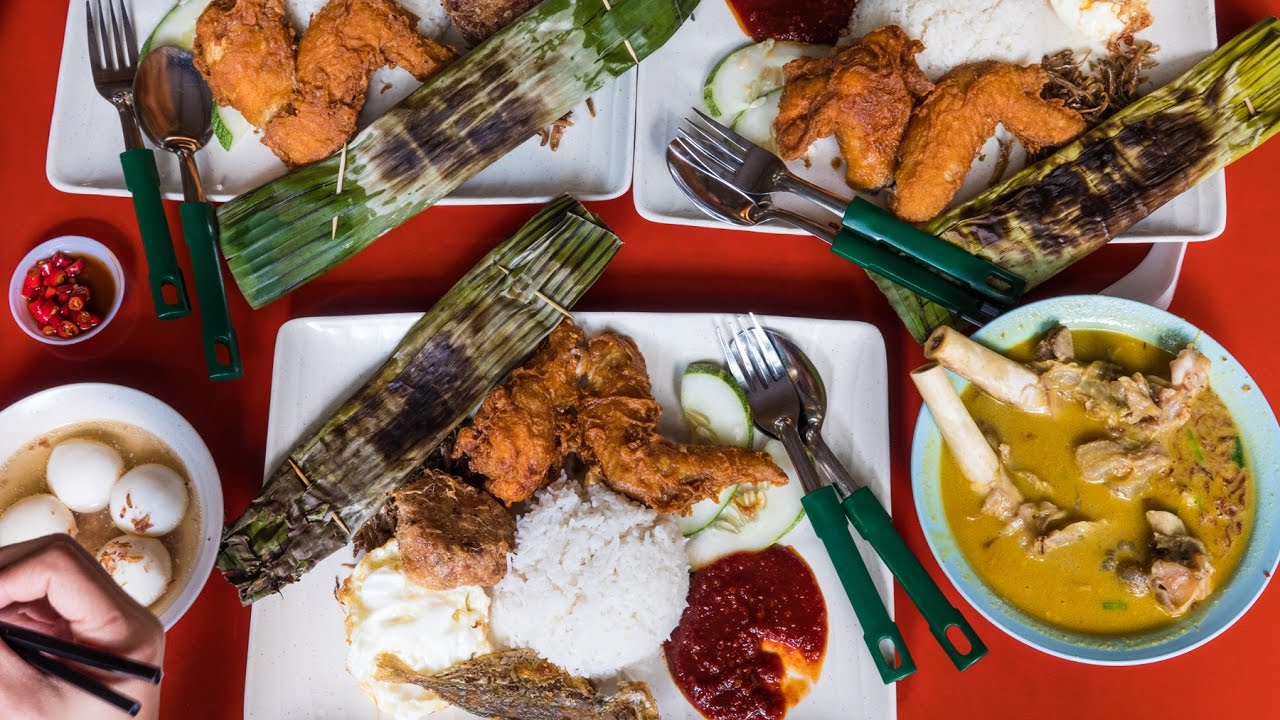These days, I no longer hate Singaporean food.
On the contrary, I love it a little too much for my own good. My waistline now resembles someone who has been eating crispy Rendang for thirty years instead of the actual ten.
As for my parents? The change has been incremental rather than revolutionary. Nowadays, my Mom no longer despises Zi Char in an open-air hawker centre, even if some of the more ‘exotic’ flavors continue to daunt her.
However, what she deems ‘exotic’ seems rather arbitrary to me: She will eat Laksa but not Biryani or Bak Chor Mee. Fish soup is acceptable but Prawn mee and Bak Kut Teh are not. She enjoys Popiah, but declines to give Rojak a chance.
Recently, on a weekend, we took the bus to Springleaf together, and for the first time in her twenty-odd years of living in Singapore, we ate Prata.
Her verdict? Pretty good. Very ‘aromatic.’
I wanted to laugh. Surely she must be the first food critic to use the adjective ‘aromatic’ in a description of Prata.
One part of me took a perverse delight in forcing her to try the local foods that our family has shunned for so long. It seemed like a good thing to demolish those age-old prejudices, especially with all that mainstream media jazz about ‘social mixing’ as a miracle cure for all ailments.
Yet, another part of me wonders, “What is the point?”
My Mom might concede that Prata tastes alright and is quite ‘aromatic’, but she will never crave a prata around midnight or wake up one rainy day with a ‘feeling’ for fish soup. What is second nature for the local will always be foreign to her.
Likewise for my Dad. He will accept hawker food if the tank is empty but in his mind, the culinary hierarchy remains unaltered. There is the Suzhou cuisine of his childhood, sitting atop its high horse/pedestal, and beneath it, everything else. He will praise anything from Suzhou as Michelin-worthy even though the few places that serve it in Singapore are objectively abysmal and uniformly overpriced (trust me on this).
Swee Choon provides a good measure of how far we have come as a family. The large-ish menu, containing both China-Chinese and Singaporean-Chinese cuisine, serves as a useful test for my families’ true culinary loyalties. Every time we go to Jalan Besar, I like to observe what my parents order and in doing so, glimpse the limits of our culinary integration.
(Footnote: Yes, I know Dim Sum is Cantonese rather than properly Singaporean. The distinction is not particularly important because my parents think of any Cantonese food as Singaporean. A confusion that ought to be forgiven because a) Cantonese influences are rife in Singaporean food and b) In any case, they have never visited Hong Kong.)
Every year, I’m vaguely disappointed when I look at the ticked boxes. Left alone to follow their stomachs, my parents unfailingly veer Shanghainese with their choices. They will order the Xiao Long Bao (X2), the Guo Tie (x1) and Lamian-style noodles, with egg tarts being the only concession to Canton (or Portugal) because of my father’s sweet tooth.
No Char Siew Bao, no Har Gao, no Siew Mai. As usual, I’m the lone voice of dissent insisting that we order Mee Suah Kueh for the sake of variety.
Sitting there in Swee Choon and quietly comparing my family’s choices to those around us, I am left wondering: As a family, did we fail or succeed at integration?

It’s an uncomfortable question and one that I do not know how to answer. Having passed that particular test with flying colours myself, I can’t help but rail against the silliness of it all—this desire to judge immigrants against a standard of Singaporean-ness as though they are contestants in a Trump beauty pageant or Westworld hosts being tested for fidelity.
The idea that ‘Singaporeans are not xenophobic if foreigners integrate and become one of us’ is ridiculous. If you walk like a duck, quack like a duck and dine like a duck, we have nothing against you. Enjoy your citizenship?
But what if immigrants are like my parents: Not unwilling, but simply too old to change? What if you can’t drop the accent, stop the bad habit of speaking loudly in public, or in my case for so many years, develop a taste for Bak Chor Mee? I imagine a police force administering breathalyzer tests for mala, and I can’t help laughing at this idea, that new citizens must adhere to a Singaporean identity that Singaporeans themselves struggle to define.
However, what strikes me most about these ‘foreigner’ comments is their tone of strident confidence in championing ‘integration’, a measure that I’m sure few of them have ever experienced. It is quite bizarre when you think about it, all these random voices calling for integration (or go home) as though integration was as simple as watching porn.
At age 14, I too wished that life had a ‘clear all browsing history’ button that allows you to erase every trace of identity, personal history, and cultural baggage with one simple click. Things would be so much easier if one could start anew simply by willing the past into non-existence.
But as I have tried to say and have perhaps said badly, the process is a bit more complicated than what the Internet pundits would have you believe.
Speaking as someone who has made the journey, I only wish that it was as simple as opening a new tab and closing the old one.
In reality, the ‘process’ is often a meandering journey full of detours and false starts, with neither a reliable road map to consult nor a visible destination in sight. From the experiences of other first-gen immigrants who have written in to RICE, I discover that my experience is both ordinary and not.
Some share my culinary confusion down to the initial disgust for yellow noodles, while others happily slurp down the noodles only to stumble on language, employment, or social niceties.
Contrary to popular belief, it’s not for the lack of trying that immigrants fall short.
With immigration, we are blessed with negative vision. Good integration is invisible but non-integration never fails to go viral. For every China tourist who makes an ass of himself on social media, there are hundreds of docile foreigners who quietly accept the slings and arrows hurled in their general direction.
This is not to say that one side is wrong and the other is right. The once and future immigrant should try to integrate, and try again if it fails the first time. But even then, this hatred of those holding out should be tempered by recognition that integration is not a decision one chooses to make, but bloody hard work.
Even if it’s something seemingly simple like ordering Nasi Lemak.

Dinner with friends at Upper Thomson. My friends order butter chicken and whilst waiting, they mock some PRC women who had earlier asked them for directions with a pronounced accent.
I feel myself bristle and change the topic back to food. Or more precisely, to a discussion of whether the ‘standards have dropped’ at this particular outlet.
It works and the conversation shifts gear.
This should give me some pleasure but it doesn’t. These days, being ‘Singaporean’ seems so simple that I almost resent it.
Is citizenship nothing more than a series of gestures, a fan dance one performs to convince the world that you belong? Sometimes, I feel like shouting, to extract from them an acknowledgment that the journey has been a torturous one, and many years of awkwardness, shame, and struggle came and went before my palate could fully enjoy the things that they take for granted.
Give the women a break, is what I wanted to say.
Before I have a chance to open my mouth, the butter chicken arrives and everything is forgotten. We eat, and we all agree that it disappoints. It’s not as buttery or tender as the last time, and we make a mental note to try somewhere else in future.
Perhaps I should have said something, but the moment had passed. Or maybe it’s better to just let things be and enjoy the food. After all, it’s very hard to be bitter with a mouth full of chicken and Naan.
Have something to say? Don’t hold it in, write to us at community@ricemedia.co.





